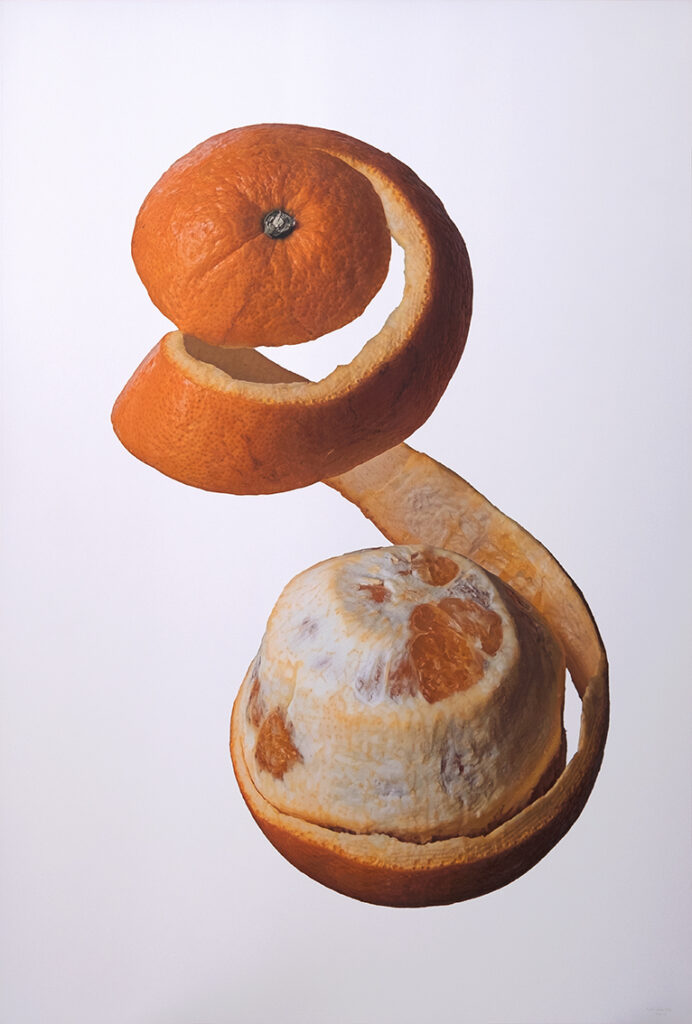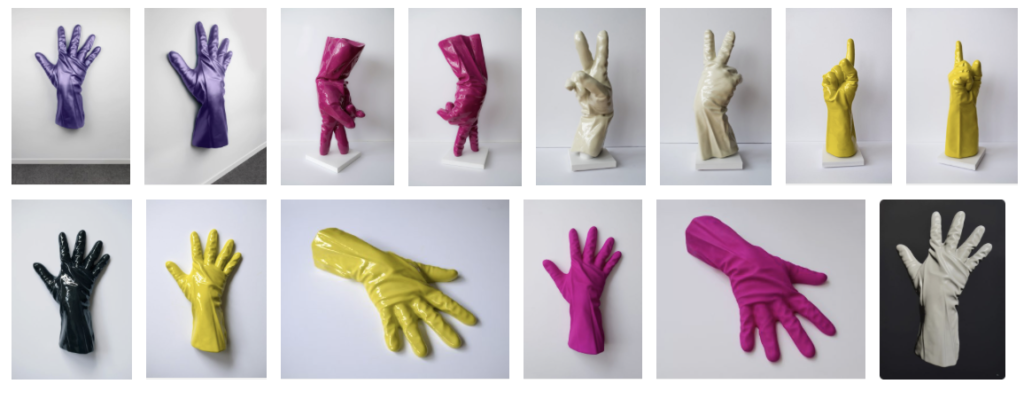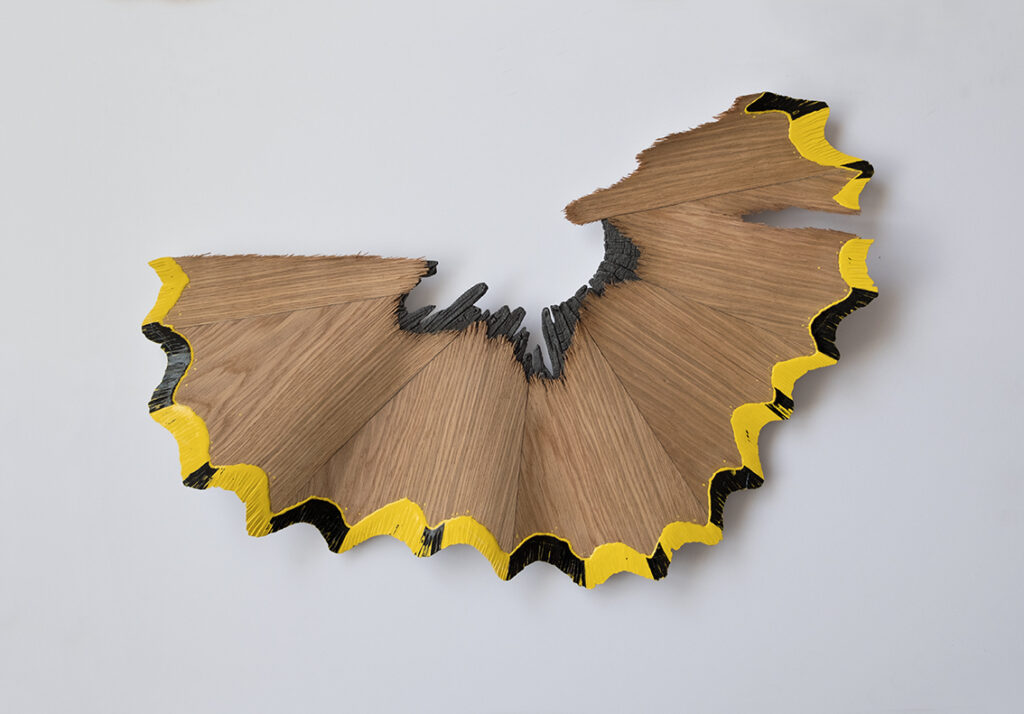Spanish artist Rómulo Celdrán has developed a distinctive style of hyperrealism through his series of finely rendered drawings, paintings and sculptures that elevate everyday objects to works of art.
Self-taught artist Celdrán (born 1973, Spain) had his first solo exhibition at the age of 16 and went on to exhibit all over the world, with a curriculum vitae including solo exhibitions in Denmark, Germany, the netherlands USA, and participations in art fairs including ArcoMadrid, Scope Basel, JustMad, Arte Lisboa, Munich Contempo, Art Cologne, Kunst Zurich, and Contemporary Istanbul. He exhibited his ‘Digital Tenebrism’ series at BBA Gallery in Berlin in 2022 and now calls the city his home. Celdrán’s artworks are owned by institutions and private collections including the Art Collection HypoVereinsbank (Germany), Basque Centre-Museum of Contemporary Art Artium (Spain), Artphilein Fundation (Liechtenstein), La Caixa Testimonio Collection (Spain) and Beth Rudin DeWoody Collection (Florida, EEUU).
Culturalee spoke to Rómulo Celdrán about his recent dual exhibition with Austrian abstract painter Adelheid Rumetshofer at Galerie Mathias Mayr in Austria, his ‘Blossoming’ series and ‘Digital Tenebrism’, a series inspired by the Baroque Tenebrist artists.

You had a dual exhibition with Austrian abstract painter Adelheid Rumetshofer at Galerie Mathias Mayr in Innsbruck. How did you view the dialogue between your SOLID sculptures and Rumetshofer’s paintings?
I love these interactions. I think that one of the qualities of contemporary art we can feel proud of is that capacity of creating dialogues, interactions and synergies between artists and acts of creations that are apparently so far away from each other. By doing this we not only highlight the creative richness of our contemporary art scene, but we furthermore emphasize the unlimited capacity of artists to develop their ideas and sensitivities in such a huge range of ways, styles, techniques, and visual proposals. In this sense, I really enjoyed exhibiting my work as a figurative artist with Adelheid Rumetshofer´s minimalistic abstraction. I felt that my work gained in nuances and dynamism while surrounded by her beautiful and subtle paintings.

The Glove sculptures that you exhibited in Austria are part of a wider series ‘HI-RES’ that explores visible reality through the analytical lens of 3D computer modelling. And you were selected by the NYC town hall as one of 6 finalists for a permanent public artwork in Manhattan. What was the starting point for the glove series?
I have to say that I was always fascinated by the use of the human hand as an art subject throughout the whole history of art. Going back into our past as creative beings, we find those first examples of hands in the caves of many places in the world, from France to Argentina or Borneo. Some of those paintings, dating back up to 30.000 years ago, were the main inspiration for these series of works. With my Solid series I tried to bring to our contemporary times a concept or idea that was already present in the minds of our primitive ancestors when they decided to use their own hands as an obvious way of saying “I am a Human, and I was here”.
As you mentioned, I took this ancestral symbol and brought it to our times using 3D scan technology. I used my own hand covered with a glove and scanned it in different gestures to then use the resultant 3D models as the reference for these sculptures. It was important for me to use a hand covered by a glove instead of a bare hand. First, because the use of a glove-shape reinforces the full importance of the gesture. And, because, as in the case of those prehistoric handprints, this choice does not allow us to personify the identity of the hand inside. We cannot easily deduce the gender, age, colour, or some other characteristics of that human being. In fact, it doesn’t matter at all. It is just a human hand and, above all, it is a symbol of our species and a sign of presence among fellow humans. Taking all of that into account, when I was selected by the New York City Department of Cultural Affairs for the project you mention, it was clear to me that my proposal would be part of this SOLID series. I could easily imagine that contemporary symbol of the human hand as a meaningful icon in one of the most cosmopolitan and multicultural cities on the planet.

Can you talk a bit about your process? I know that each series of drawings and sculptures takes you months or even years to complete. What is your starting point, and how does the process differ when you visualise an object through drawing or sculpture?
As you say, my work is mainly based on series of works around a certain concept. In general, when I decide to start working on a new series, this must be the result of months considering this specific idea together with some others to finally choose the definitive one due to multiple aspects. What I mean is that a new series of works can never be valid for just one good reason. It may appeal to me and that specific moment of my production at many different levels. From the intellectual, to the emotional, the technical, etc. It must fully make sense to me. It must somehow connect with my whole production as well as be a new step forward. Especially because it is going to be a series that I commit to developing for some years, and also because every single piece of the series is going to require a long time for me to accomplish.
The essential differences between painting and sculpture are also a big part of the process of choosing and defining every series and every work. Some series are purely pictorial, their concept and visual language are conceived as part of a bidimensional world. This is one of the inherent conditions of painting. A painting exists in a 2D world and that determines both a conceptual and technical way of approaching it. On the other hand, a sculpture inhabits the three dimensions of space and that jump from 2D to 3D also determines both the conceptual and technical approach.
You recently relocated from Spain to Berlin. Was it the Berlin art scene that made you want to relocate, and are you planning any exhibitions in Berlin?
Berlin is an amazing city for art and artists, but it is also an amazing city for many other reasons. My wife and I made the decision to move here mainly because we love this city in many aspects including the art scene, but not only because of that. We love the vibe, the music scene, nature around, we love our friends here and we love how this city can generate encounters between people coming here looking for the same. At this moment, my projects and collaborations take place in other cities. But I would love to work with at least one gallery here. I am sure it will happen soon.

You’ve been working on ‘Blossoming’, a series of drawings depicting flowers, and ‘Digital Tenebrism’, a contemporary tribute to the Baroque old masters featuring still life under the light of cell phones and laptops. Is the Baroque period a big influence on you, or do you get inspiration from different periods of art history depending on what subject you are depicting?
Art History as I understand it, is an alive process connecting us from the present to the past as creative human beings. As every aspect of Human knowledge, is an ongoing process deeply rooted in the human condition. I have always worked as a contemporary artist while feeling myself connected with what my art ancestors felt, thought, developed, questioned, invented and made. Sometimes this dialogue between present and past can be more evident, while in some others it remains a more subtle inspiration not so evident from the eyes of the viewer.
For example, as I said before, in my SOLID series I looked back at very primitive expressions of human creativity and art expression, while finding my own way of creating something completely contemporary under that inspiration. My series ‘Digital Tenebrism’ is another good example. I always felt fascinated by the visual power of these Tenebrist artists from the Baroque, and the works they created. I wanted to bring the power of these paintings to our contemporary world, keeping the essence of those images while updating the elements that made them to be part of their historical moment. That is why, in my proposal, the traditional sources of light turn into the light coming from digital devices.
I would say that in the case of my ‘Blossoming’ series, my motivation for these paintings is coming through a more direct contact with nature and mathematics and less from historical inspiration. Even when I look back on those amazing artists working around the subject of flowers, my purpose has been staying away from those ways of taking flowers from its most, let’s say, romantic and decorative way. To the contrary, my goal is to have a new and committed look at these fascinating natural objects with the only intention of admiring their beauty and perfection, its mathematical patterns, the delicate structure of their parts, and trying to get over the traditional connotations of them.

Do you have any tips for young artists wanting to get into the art world?
I would encourage every artist to deeply connect with what they really believe that is personal, authentic and untransferable in them. That personal truth, getting over any kind of trendy style or way of working. The technological avalanche together with the massive amount of information controlled by fashionable or ideological patterns may take all of us out of that personal truth as creators. For me, one of the best tips would be to stay informed and live in the present while staying firmly connected with that personal and untransferable creative truth. In the end, that is going to be the only powerful difference with the rest.
All featured images Copyright Rómulo Celdrán.




